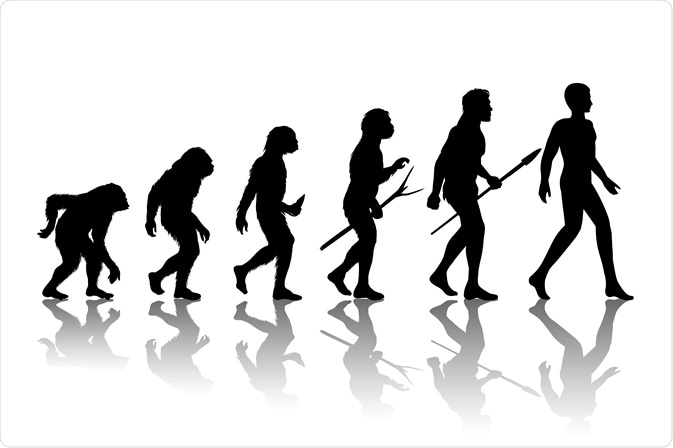Phylogenetic analysis is the study of the evolutionary development of a species or a group of organisms or a particular characteristic of an organism.
 Image Credit: MSSA/Shutterstock.com
Image Credit: MSSA/Shutterstock.com
What is phylogenetic analysis?
In phylogenetic analysis, branching diagrams are made to represent the evolutionary history or relationship between different species, organisms, or characteristics of an organism (genes, proteins, organs, etc.) that are developed from a common ancestor.
The diagram is known as a phylogenetic tree. Phylogenetic analysis is important for gathering information on biological diversity, genetic classifications, as well as learning developmental events that occur during evolution.
With advancements in genetic sequencing techniques, phylogenetic analysis now involves the sequence of a gene to understand the evolutionary relationships among species. DNA being the hereditary material can now be sequenced easily, rapidly, and cost-effectively, and the data obtained from genetic sequencing is very informative and specific.
Also, morphological estimates can be used to infer evolutionary developments, especially in cases where genetic material is not available (fossils).
What is a phylogenetic tree?
A phylogenetic tree, also known as phylogeny, is characterized by a series of branching points expanding from the last common ancestor (root) of all operational taxonomic units up to the most recent organisms (tips). The tree is compared to leaves (tips), nodes, and branches, wherein two nearby nodes (taxonomic units) are connected by one branch (internal branch).
In a phylogenetic tree, leaves representing species, populations, individuals, or genes can be connected to nodes through branches (external branch). The branches represent the passage of genetic information between subsequent generations, and branch lengths denote genetic change or divergence. The degree of divergence is generally estimated using the average number of nucleotide substitutions per site.
While analyzing a phylogenetic tree from the root toward the tips, a node represents the exact position from where two or more descendant lineages are generated from an ancestral lineage. In the newly generated lineages, evolution occurs autonomously.
The particular branching pattern created by lineage splitting is called topology, which represents the evolutionary development of the contemporary generation through progressive branching of lineages.
Depending on the study requirement, a phylogenetic tree can be rooted or unrooted, as well as scaled or unscaled. The proper rooting of a phylogenetic tree is required to better understand the directionality of evolution and genetic divergence.
Various methods including a molecular clock, midpoint rooting, and outgroup rooting, are available to accurately estimate the tree root using gene sequencing data and assumptions. In contrast, an unrooted phylogenetic tree only represents relationships among species without showing an ancestral root of origin.
In a scaled tree, a proportional relationship exists between the branch length and the amount of genetic divergence that took place on that branch. In contrast, all branches are of equal length in an unscaled tree, and there is no correlation between the branch length and genetic divergence.
Understanding and building phylogenetic trees | High school biology | Khan Academy
What are the applications of phylogenetic analysis?
Phylogenetic analysis provides an in-depth understanding of how species evolve through genetic changes. Using phylogenetics, scientists can evaluate the path that connects a present-day organism with its ancestral origin, as well as can predict the genetic divergence that may occur in the future.
Phylogenetics has many applications in medical and biological fields, including forensic science, conservation biology, epidemiology, drug discovery and drug design, prediction of protein structure and function, and gene function prediction.
A more accurate estimation of the evolutionary relationship among species is now possible in a molecular phylogenetic analysis using gene sequencing data. Also, the Linnaean classification (based on relatedness in obvious physical traits) of newly evolved species can be done using molecular phylogenetic analysis.
Regarding public health applications, molecular phylogenetic analysis can be employed to gather information about pathogen outbreaks. A possible source of pathogen transmission can be investigated by analyzing the epidemiological linkage between genetic sequences of a pathogen, such as HIV.
In conservation biology, phylogenetic analysis can predict which species are becoming extinct, and thus, should be taken care of.
Phylogenetic analysis can be useful in comparative genomics, which studies the relationship between genomes of different species. In this context, one major application is gene prediction or gene finding, which means locating specific genetic regions along a genome.
Phylogenetic screening of pharmacologically related species can help identify closely related members of a species with pharmacological significance.
In microbiology, phylogenetic analysis can be applied to identify and classify various microorganisms, including bacteria.
Moreover, phylogenetics can be used to evaluate the reciprocal evolutionary interaction between microorganisms, as well as to identify mechanisms (horizontal gene transfer) responsible for the rapid adaptation of pathogens in an ever-changing host microenvironment.
References
Further Reading
Last Updated: Mar 9, 2021